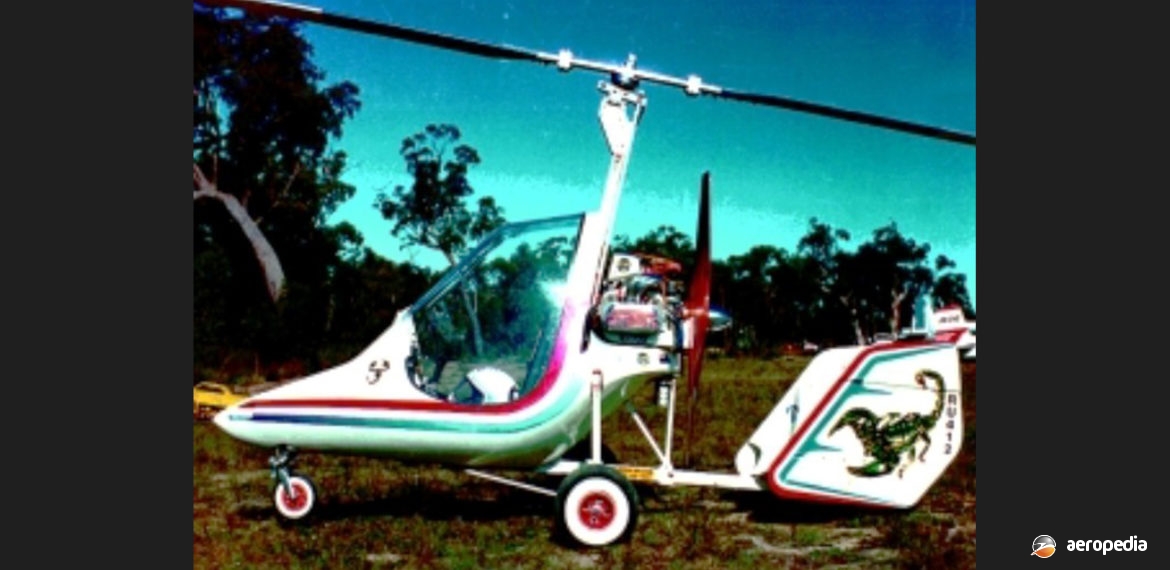Photograph:
An early production Australian Autogyro Skyhook (Author’s collection)
Country of origin:
Australia
Description:
Single-seat light sport gyrocopter
Power Plant:
Mk 3
One 60 kw (80 hp) Volkswagen 2200 cc four-cylinder horizontally-opposed air-cooled engine
Specifications:
- Rotor diameter: 7.01 m (23 ft)
- Length: 3.35 m (11 ft)
- Height: 2.08 m (10 ft)
- Main rotor area: 38.5 m² (414 sq ft)
- Max speed: 161 km/h (100 mph)
- Max rate of climb: 305 m/min (1,000 ft min)
- Range with 43 litres (9.5 Imp gals) of fuel at 113 km/h (70 mph): 450 km (280 miles)
- Empty weight: 161 kg (354 lb)
- Loaded weight: 271 kg (597 lb)
History:
Australian Autogyro was founded by Edward Minty of Turramurra, NSW, who built a series of gyrocopters which were supplied to purchasers in either kit form or as a complete aircraft. Originally known as the Ted Minty Skyhook, this autogyro began to be developed in the 1980s and became available in three models.
The Mk I was a basic open framework powered by a 39 kw (52 hp) Rotax 503 engine with an IvoProp two-blade wooden propeller. The Mk II had a partially enclosed fibreglass cockpit shell and had a 60 kw (80 hp) 1916 cc converted Volkswagen engine driving an Invincible propeller, the rotor blades being 7.01 m (23 ft) in length, aluminium riveted. The Mk 3 had the same 1916 cc engine driving a two-blade Invincible wooden propeller and had a minimum speed of 24 km/h (15 mph), and a normal cruising speed of 97 km/h (60 mph), gross weight being 299 kg (660 lb).
The fully customised Mk III was similar and had an empty weight of 172 kg (380 lb), a useful load of 127 kg (280 lb) and a gross weight of 299 kg (660 lb). It was a single-seat lightweight autogyro produced by the Australian Autogyro Company of Turramurra, NSW. The power plant varied according to the wishes of the owner but a VW/Porsche unit of 2200 cc could also be installed.
The undercarriage was fixed tricycle with a small spring tailwheel at the rear end of the keel, the steerable nosewheel being linked to the rudders. Accommodation was provided for a pilot only. It is not known how many were produced but registration G-2600 was allotted to an example with the Australian Gyrocopter Association.

